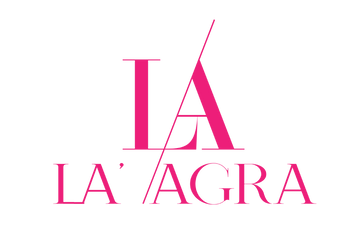Pleats are a common design feature that are found in many South Asian clothing. In the inaugural collection of La’ Agra we explore how pleats can be reimaged in many forms to create elegant evening wear items. In this blog we dive into how pleats have been a staple design feature in many types of fashion through history, proving its enduring appeal.
The history of pleating dates back to ancient civilizations, with the Greeks and Romans being early adopters of this technique. In ancient Greece, pleats were a hallmark of luxury, often adorning chitons and peplos garments worn by both men and women. These pleats not only added an aesthetic element but also allowed for ease of movement.
Fast forward to the Renaissance era, and pleats regained prominence with elaborate collars and ruffs, showcasing intricate pleating techniques. The 19th and early 20th centuries saw the rise of pleated fabrics in women's dresses, symbolizing both femininity and opulence. However, pleats truly entered the modern fashion scene during the 1920s, as designers like Mariano Fortuny experimented with pleating silk fabric to create the iconic Delphos gown,
Pleating is a versatile technique that comes in various forms, each lending a distinct character to the garment:
-
Accordion Pleats: Also known as knife pleats, these are narrow, evenly spaced pleats that create a structured, angular effect. Accordion pleats are commonly used in skirts and dresses, adding volume and movement.
-
Box Pleats: Box pleats consist of two knife pleats facing each other, with a defined space in between. They create a more pronounced and structured look, often seen in school uniforms and tailored garments.
-
Inverted Pleats: Inverted pleats are the reverse of box pleats, with the folds facing each other on the inside. These pleats add a subtle flare and are often used in skirts and dresses.
-
Pleat Tucks: These are tiny, delicate pleats that add texture to fabric without drastically altering its shape. Pleat tucks are commonly used as intricate design details on collars, cuffs, and plackets.
-
Sunburst Pleats: Sunburst pleats radiate from a central point, creating a dynamic and eye-catching effect. They're often used in skirts and dresses to create a dramatic silhouette.
-
Pleat Flares: Pleat flares are wide pleats that create a flowing, graceful movement in garments. They are popular in dresses, especially those designed for dancing or formal occasions.
Contemporary Applications of Pleats
Pleats have continued to captivate designers and fashion enthusiasts alike, evolving with the times:
-
Haute Couture: Couturiers like Issey Miyake and Iris van Herpen have pushed the boundaries of pleating, using innovative techniques like heat-pleating and laser-cutting to create avant-garde designs that challenge traditional perceptions of fashion.
-
Streetwear: Pleats are no longer restricted to formal attire. Streetwear designers have incorporated pleats into oversized t-shirts, hoodies, and joggers, creating a unique blend of comfort and style.
-
Accessories: Pleating has expanded beyond clothing to accessories like scarves, bags, and even shoes. Pleated leather and fabric can add a touch of elegance and texture to everyday items.
-
Home Decor: Interior designers have adopted pleats in home decor, using pleated fabrics for curtains, cushions, and upholstery to introduce visual interest and depth to living spaces.
Pleating is a testament to the ever-evolving nature of fashion. Its journey from ancient civilizations to modern runways showcases its enduring appeal and adaptability. Whether adding drama to a ball gown or casual charm to a t-shirt, pleats continue to captivate us, reminding us that even a simple fold can tell a story of creativity, innovation, and elegance. So the next time you admire the graceful folds in a garment, take a moment to appreciate the artistry and history that pleats bring to the world of fashion.


